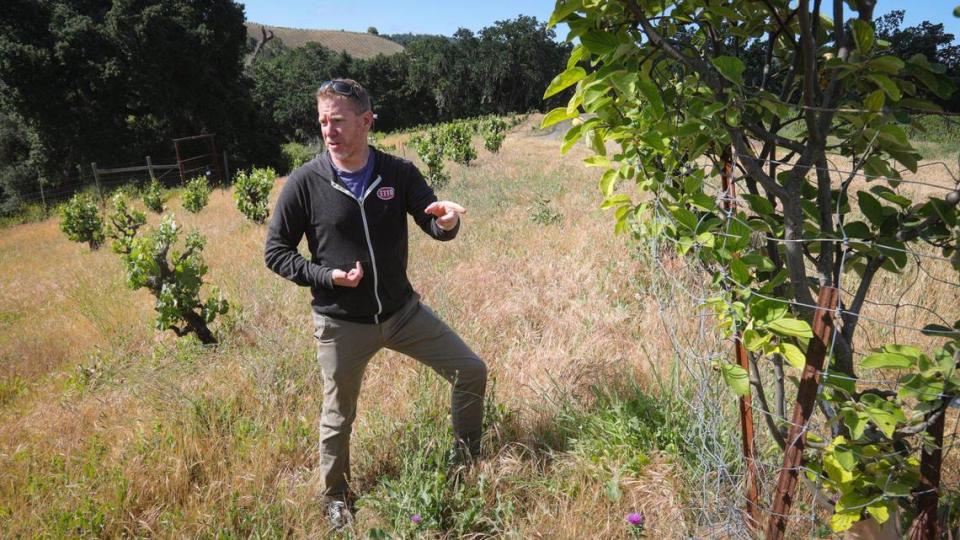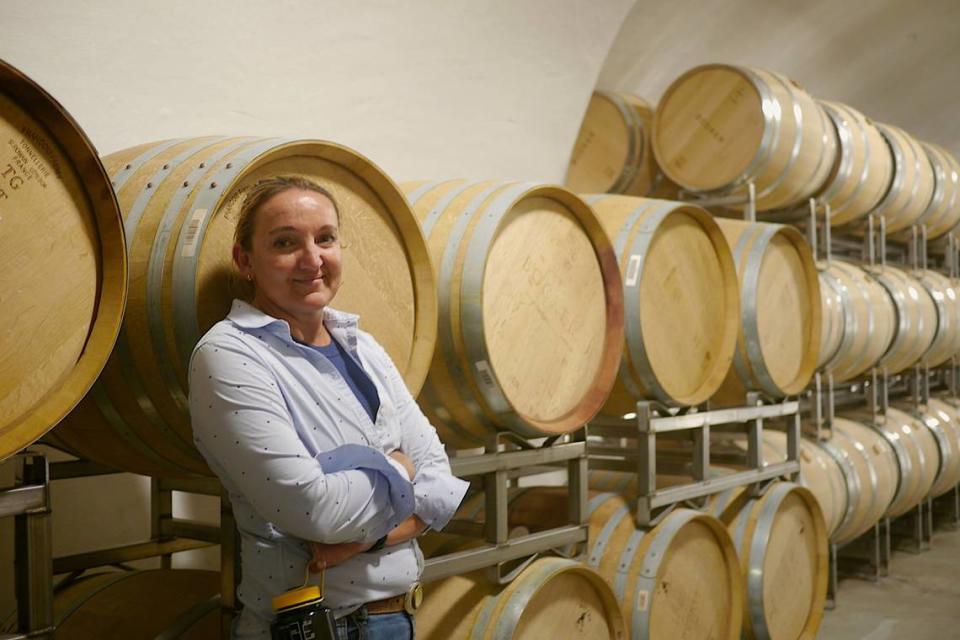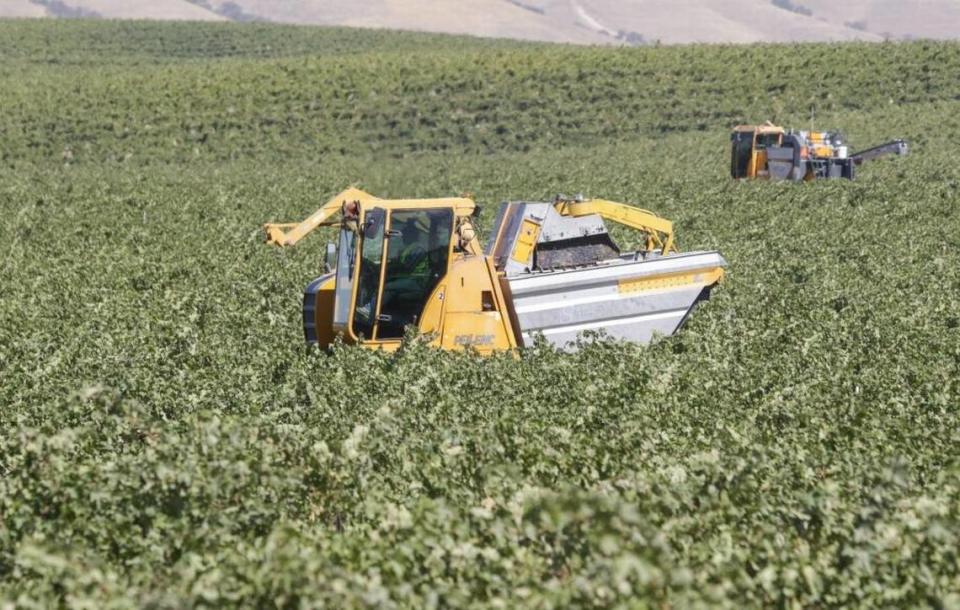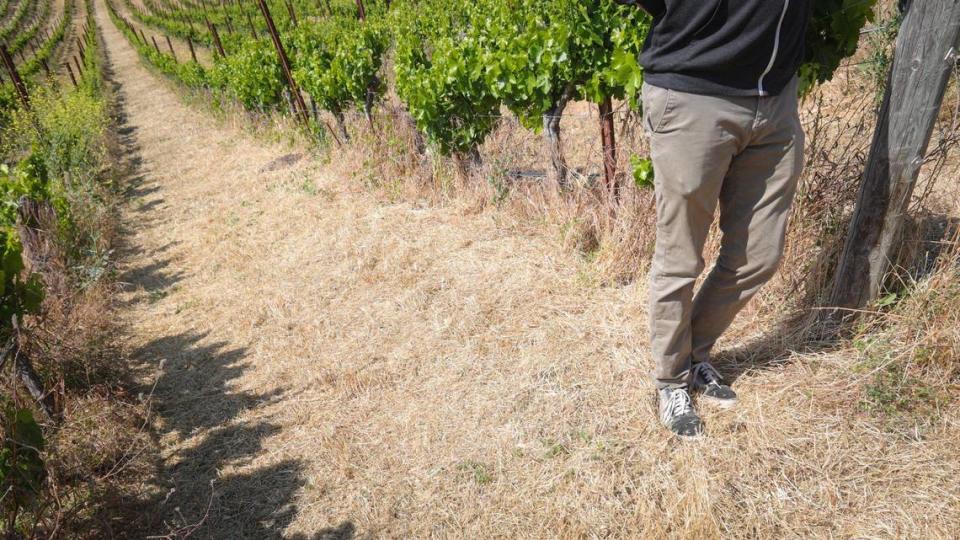From flooding to drought, here’s how SLO County winemakers are adapting to climate change
Editor’s note: This article is the third in a four-part series exploring how climate change may reshape life in San Luis Obispo County over the next 10 to 50 years. The series will examine the existing science and evaluate the steps we can take to reverse the impacts, both as a community and as individuals.
Intense cabernet sauvignons, fruity petit syrahs and rich Rhône blends are among the varietals that make San Luis Obispo County a destination for wine lovers.
The Central Coast’s Mediterranean climate and chalky soils create an ideal spot to cultivate more than 60 wine grape varieties. In 2021, more than 46,500 acres of San Luis Obispo County were covered by vines, according to the San Luis Obispo County Department of Agriculture.
Those grapes had a value of $281.5 million in 2021, nearly a third higher than in 2020, according to the 2021 annual agricultural statistics report.
But all of that could be at risk in the future as climate change causes long-relied-upon weather patterns to shift.
In 2022, winemakers in the Paso Robles and San Luis Obispo coast viticulture areas found that long stretches of hot, dry days yielded a smaller harvest that came earlier than usual.
At the time, experts said “the growing season has been one of the warmest in recent memory,” according to a news release from Solterra Strategies. “The heat, coupled with ongoing drought conditions, is presenting growers with challenges.”
Climate projections for the next 20 to 30 years in California indicate that year-to-year variations in total precipitation will intensify, meaning drier dry years and wetter wet years.
That will likely lead to longer and more intense droughts, interrupted by short, intense storms.
These challenges could continue — and even worsen — if San Luis Obispo County growers are unable to adjust to climate change in the coming years.
Innovators in the industry are getting down into the dirt to figure out how to build healthier soils, grow more resilient grapevines and, as a result, create a better product.
“The great thing about wine is that all of the things that that we’re doing to help make more resilient soils and pull carbon out of the atmosphere and use less water ... make better wine,” Tablas Creek Vineyard owner Jason Haas said. “It’s not a compromise between choosing something that is going to make the best possible wine and choosing something which is going to make for a more sustainable future — they’re totally aligned with each other.”

SLO County officials prepare for extreme conditions
The changing precipitation patterns have required farmers and water resources planners to adjust and plan for new uncertainties.
Groundwater basins beneath the vineyards that cover the rolling hills in Paso Robles and Edna Valley have historically been severely over-pumped to irrigate during dry years, but groundwater sustainability plans are being implemented in the regions in attempts to bring the basins back into balance.
The plans generally call for groundwater pumping reductions, as well as promoting good farming techniques to reduce water use, better time irrigation and more closely monitor who is drawing how much water from the imperiled basins.
Looking for another angle to address this issue, San Luis Obispo County’s Groundwater Sustainability Director Blaine Reely is considering developing a “system of recharge features” that would connect to natural streams, creeks and rivers, he said.
Akin to ditches of various sizes, these recharge features are built to collect and hold runoff from big storm events.
“Recharge features would give the water time to slowly percolate into the soil profile and allow the recharge to happen into the groundwater basin,” Reely said, noting his department is studying the best locations for them.
Courtney Howard, San Luis Obispo County’s Water Resources Division manager, sees potential in Reely’s project and in other initiatives that can improve the management of existing water supplies.
“Just about all wastewater facilities in our county have either implemented reuse strategies or are on their way to implementing reuse strategies,” she said. “That’s a combination of recharging groundwater basin or directly delivering it for irrigation purposes.”
San Luis Obispo County officials are also considering building a regional desalination facility to “take advantage of being on the coast,” a process that Howard said she expects would take a couple of decades to come to fruition.
Vintners finding better ways to grow wine grapes and care for soils
Some vineyards in San Luis Obispo County have leaped headfirst into efforts to reduce their impact on the groundwater basins.
When the Haas family started Tablas Creek Vineyard in Paso Robles in the late 1980s, they worked with a French family that has been growing organic grapes in the Rhône Valley since the early 1950s. Tablas Creek brought those new grape varieties — and a commitment to sustainable farming — from the south of France to the steep western Paso Robles hills.
“That was sort of the baseline — that we were going to be farming organically,” said owner Haas. “As we got deeper into this, we realized that really, for us, the goal was to do everything we could to show off our character.”

To Haas, that meant going into biodynamic farming.
Instead of replacing chemical fertilizer with organic fertilizer — as is done in standard organic farms — farmers who use a biodynamic system plant and rotate cover crops, which naturally fertilize the soil.
The Haas family also incorporated animals into the vineyard in 2012, when they acquired sheep and started having them graze the cover crops in the winter.
The sheep turn the cover crops into manure which then fertilizes the vines while churning the soil with their hooves. That helps reduce the number of tractor passes and tilling needed, Haas explained.
“We see the benefits of that healthier soil in the grapevine’s resistance to things like droughts and heat spikes and extreme weather events,” Haas said, “and we’ve seen it translate into the grapes that we’re picking, in the wines that we’re making.”
Haas noted that by using these methods, he has been able to triple the organic material content in his vineyard’s soil over the past several years from 2% to about 6%. Generally, the more organic material in soil, the healthier it is.

Hilary Graves, general manager at Paso Robles’ Booker Vineyard, has implemented sustainable farming practices in the many vineyards she has run as a consultant.
“Mother Nature can do everything better than we do,” Graves said. “So, if I can get Mother Nature’s help in solving these problems, I think that’s the best thing to do.”
Like Haas, Graves minimizes tiling and uses sheep to graze cover crops grown in the winter to improve soils and ultimately the quality of the grapes and wines.
“I believe that farmers have more power than any other occupation to capture carbon and hold it in the soil because what we’re doing is growing plants, and they do that by nature,” said Graves, who previously served as president of the San Luis Obispo County Farm Bureau.
Many San Luis Obispo County wine growers are experimenting with drought-resistant rootstocks that develop into more resilient and water-efficient vines.
And many in the industry are switching to varietals better suited for warm climates.
Jerry Lohr of J. Lohr Vineyard and Winery said he used to be able to grow merlot grapes in the Paso Robles area. Now, with hotter summers, he’s moved those vines to his vineyards in Templeton, where the climate is typically a bit more temperate, he said.

How can growers navigate climate change?
Wine grape growers in San Luis Obispo County don’t have to look far to find ways to improve their vineyard’s resilience to climate change.
In June 2021, Devin Best, executive director for the Upper Salinas-Las Tablas Resource Conservation District, launched the Sustainable Land Initiative. The program helps farmers who want to incorporate regenerative practices find necessary technical information, apply for grants and permits or connect with partners.
Four RCDs across three counties are part of the initiative, including dozens of farms, Best said.
Best’s team at the resource conservation district appreciates the special needs required by grape growers to produce a successful crop for thirsty wine growers.
He said a large challenge in getting farmers on board with regenerative farming is a fear that the short-term costs will outweigh the long-term benefits, which he notes hasn’t appeared to be the case with the vintners he’s worked with.
“We’ve kind of lost track of what farming is and it’s turned more into just business,” Best said. “I’m trying to show that these regenerative agriculture methods are going to be beneficial for wildlife, water, soils, farm resiliency, sustainability, climate change — all these sorts of things. They’re also going to be beneficial for meeting your bottom line as a business.”
Part 4 of 4: How SLO County is poised to be a leader in clean energy and climate change action


 Yahoo Sports
Yahoo Sports 